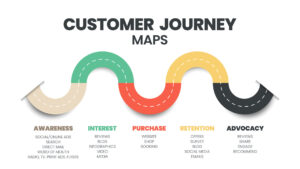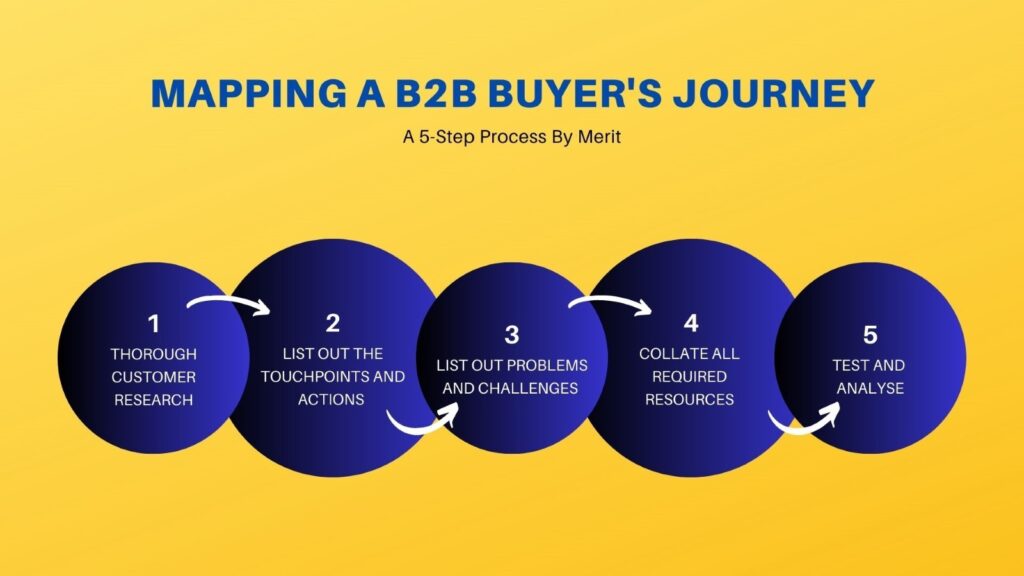
At the foundation of any successful marketing funnel lies the buyer’s journey. Customers of this time and generation do not buy products or services out of the blue. Before they make the final purchase, many prefer to invest days, weeks, or even months of serious consideration and comparison.
Businesses lose out on lucrative sale-scoring opportunities when they delay engaging with potential buyers from the beginning of the buyer’s decision-making journey. Today, buyers don’t see any value in being prospected, manipulated, or closed. They rather look for additional information about your product or service that they can’t find online.
Why is the buyer’s journey important to marketing and sales representatives?
Given the simple accessibility to reliable information through digital media, it is now much simpler for buyers to acquire knowledge on their own.
In practice, B2B buyers only spend 17% of the time interacting with potential suppliers while considering a deal, according to Gartner.

When sales representatives study the B2B buyer’s journey, they get a higher chance of building an effective connection with their buyers while strategically placing their products/services along the buyer’s journey.
Sales reps thoroughly comprehend the buying cycle, the challenges and pain points customers face along the way, and the influential factors that determine their reasoning, and thus are able to negotiate better, enhance the buyer experience, increase conversion rates, and effortlessly move prospects to the next stage of the sales funnel.
What is the B2B buyer’s journey?
The standard or most probable path a potential client goes through before buying a product or service is known as the buyer’s journey. It covers the thoughts, interactions, responses, and experiences a target consumer may go through before becoming an actual client. The prospect will undergo a step-by-step process to learn, research, and analyse a new product or service before deciding to buy it.
The process of B2B purchasing is not predictable or linear. Instead, throughout a typical B2B transaction, clients participate in multitracking at every stage of the journey. The journey is more or less simultaneous rather than chronological.
What is the difference between a B2B buyer’s journey and a B2C buyer’s journey?
There is a vast difference between B2B and B2C customer journeys. The market and audience differ in many ways. One buyer’s journey cannot be copied to another. Every journey is unique.
| B2B buyer journey | B2C buyer journey |
| The sales cycle is longer | The sales cycle is short |
| Buyer involves multiple stakeholders | Buyer is a single person/family |
| Deals involve a major chunk of budget | Deals are more affordable and simpler |
| Journey is complex | Journey is more linear |
| Relationship becomes personal | Relationship remains commercial |
| Narrow and niche customer market | Broad customer base |
| Customer retention is higher | Customer retention is poor |
| Fewer options in the market | Broad range of choices |
Is the Buyer Persona important for deriving a buyer’s journey?
The very first step before you even begin the process of determining your buyer’s journey is to study your buyer to create an accurate buyer persona. Buyer personas are comprehensive descriptions of your ideal audience derived from data and market analysis, such as age, gender, location, likes and dislikes, profession, income, education level, and values. Understanding your buyer’s persona will help you in developing a powerful buyer’s journey.
Download this FREE B2B Buyer’s Persona Template
What are the stages of the B2B buyer’s journey?
The following three stages are used by businesses to evaluate a prospect’s decision-making process. There will be a unique set of questions at each stage of the buying process that you can either assume or send out quick surveys at various points along the way to receive real-life responses.

Below, we have given a thorough breakdown of each stage and how it impacts the buyer’s thought process.
Stage 1: Awareness: Acknowledging the problem
In the awareness stage, the prospective buyer knows they have a problem that needs a solution. This stage affirms the goals, pain points and issues experienced by the prospect and educates them on how they can identify their needs.
During the awareness stage, you should ask yourself the following questions to fully comprehend a prospect.
- What are the prospects’ objectives or obstacles?
- How do they achieve these objectives or manage these problems?
- What are the repercussions of the prospect’s neglect of the issue
- How do prospects choose what should be given preference – their goal or challenge
- Are there any typical misunderstandings that prospects have about how to handle the objective or problem?
Stage 2: Consideration: Evaluating available options
As people research solutions to their pain points, they begin to see their options. This is when they enter the consideration stage.
This stage is characterised by three factors – brand research, comparison, justification.
In brand specific research, prospects dig deeper into reviewing the companies they have in mind by checking their websites, google reviews, detailed product descriptions etc.
Your prospects will find it simpler to compare your business to your competitors if you provide them with educational and practical information about how your goods and services can solve their problems and help them reach their goals.
When it comes to making the choice to buy, the more detailed and helpful you are with your content, the more likely it is your prospect will turn to your business for a solution.
You must therefore serve your prospects with materials that are directed at the decision-maker for the issues or goal in question.
Here’s what you should ask yourself to better understand the decision maker:
- What types of services are your prospects looking into?
- How do they get acquainted with the various types?
- How do they see the advantages and disadvantages of each category?
- What factors do they consider when choosing the appropriate category?
Stage 3: Decision: Determining a final solution
In the decision stage, buyers choose the product or service that will solve their pain point.
There are 2 leading factors in the last stage, Select and Purchase. At this point, your prospect is thinking about how to compare the advantages and disadvantages of other suppliers, thus this is usually the time when they get in touch with you directly.
The way you handle purchases is crucial, since bad customer service and a lack of resources for best practices may cause customers to back out of a purchase sooner than they originally intended.
Questions that define the Decision stage are:
- What standards do customers use to compare the services offered?
- What do people enjoy about your company’s services in comparison to your alternatives?
- What objections do they have to your products?
- Who needs to be consulted before making a decision?
- How does each person’s viewpoint on the choice differ from one another?
- Do potential customers consider testing the product before making a purchase?
- Do purchasers need to make any further preparations before making a purchase, such as training schedules or action plans?
Moving through the buyer’s journey
Eventually, after a few digital interactions and engagements, the journey should end with a one-on-one interaction with the prospect in the form of an email, chat, or phone call. This typically happens at the bottom of the marketing funnel, referred to as the decision stage of the buyer’s journey. The prospect’s problem or opportunity has probably changed since their first contact as they learn more about their issue and their understanding of the available solutions evolves.
Creating content that makes a powerful impression throughout
It is important to identify all the channels via which you may directly or indirectly engage the prospect so you can leave a good impression before your final one-to-one contact. This can be exhibited in the form of blogs, social media activities, webinars, eBooks, and any other insightful materials you may offer in your field of specialisation.
The language, tone, and content of the resources you offer at each stage of the buyer’s journey should vary upon relevance. Understanding your buyer’s persona and journey will help you connect your content, communication, design, and offerings to fit the unique requirements, behaviours, and problems of the people who make up your target audience.
Building the B2B buyer journey
The B2B buyer journey is often non-linear, making a map vital for understanding how your potential customers arrive at the decision to make a purchase.
Following the suggested buyer journey stages is a good way to start the process. However, truly understanding what has led customers to the decision to buy involves an understanding of their motives, tracking their arrival to your solutions, and continually optimizing their journey for conversions.
Here’s a checklist by Merit.

How can Merit help in your B2B journey?
Merit has a proven track record of providing excellent quality, highly filtered, rich database of your buyers.
At Merit Group, we partner with some of the world’s leading B2B companies. Our data teams work closely with our clients to build comprehensive B2B marketing contact lists that provide a direct line to their target audience.
If you’d like to learn more about our service offerings or speak to a marketing data consultant, please contact us here: https://www.meritdata-tech.com/contact-us
Related Case Studies
-
01 /
Optimising Marketing Campaign ROI through Cost Effective Automation Services
The leading provider of essential data, insights and analysis of the UK and EU political and public sectors had the challenge of lack of skilled resources in the market who had the experience of working on the new marketing automation tool to fulfil the massive demand for ongoing email marketing campaigns to drive delegate and sponsor acquisition for ongoing event and media portfolios.
-
02 /
Sales and Marketing Data Analysis and Build for Increased Market Share
A leading provider of insights, business intelligence, and worldwide B2B events organiser wanted to understand their market share/penetration in the global market for six of their core target industry sectors. This challenge was apparent due to the client not having relevant tech tools or the resources to source and analyse data.
